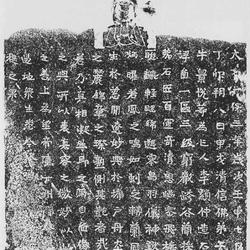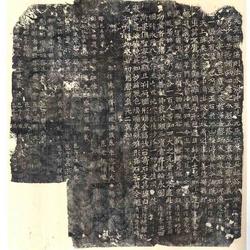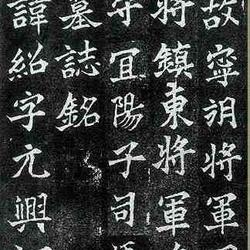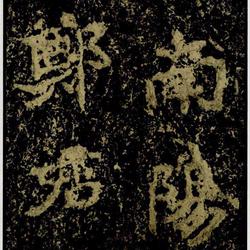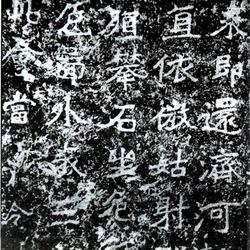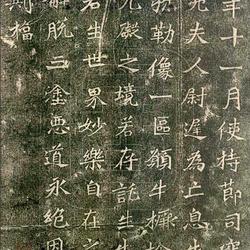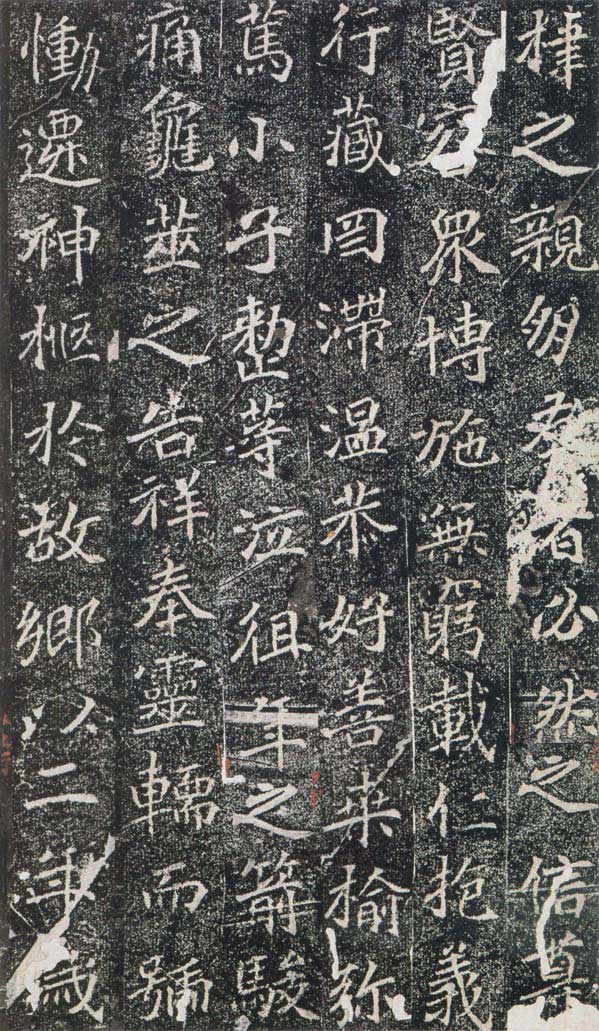
The full name of "Diao Zun's Epitaph" is "The Epitaph of Diao Hui, the Governor of Luozhou", which was engraved in the second year of Xiping in the Northern Wei Dynasty (517 AD). Approximately 80cm high, 70cm wide and 15cm thick. There are 28 lines in total, with a full line of 33 characters. Zhiyin has 2 columns and 33 rows.
The Diao family belongs to the Bohai family, and this chronicle records the political achievements of the Diao Zun family. This epitaph was unearthed at an abandoned temple site in Nanpi County, Hebei Province in the early Qing Dynasty. The lower right corner was incomplete when it was unearthed, with more than 150 characters missing and more than 20 characters missing in the middle. In the twenty-seventh year of Qianlong's reign (AD 1762), Liu Kelun of Leling found it from a friend and repaired the missing parts with wooden boards and carved inscriptions on them. Soon after, it was destroyed and repaired with stones. Later, it was collected by Yanshan Ye, Nanpi Gao, Zhang Zhidong and others, and is now in the Shandong Provincial Museum.
The calligraphy of "Diao Zun's Epitaph" is clear and muyang, and it is one of the famous calligraphy in the Northern Wei Dynasty's epitaphs. His strokes are graceful and graceful, and his strokes combine square and circular strokes with powerful force. There are many changes in the starting and ending of the strokes, as well as the turning points. Each character is different. The characters are correct in shape, dense in structure, round and thick in strength, and have a dignified and elegant beauty. Different from many inscriptions in the Northern Wei Dynasty, it is not known for its sharpness and sharpness, but for its conciseness and beauty. Kang Youwei's "Guang Yi Zhou Shuang Ji" listed this chronicle as a masterpiece, commenting: ""Diao Zunzhi" is like the water of the West Lake, famous for its beauty throughout the world." Yang Zhenfang's "Stele Narrative" says:
"The epitaphs of the Six Dynasties are distinguished by their majesty and strength. They have the charm of the Six Dynasties but not their customs. The twists and turns are like the romance of the two Jin Dynasties. Tang people such as Xu Hao and Yan Zhenqing were all born here."
The extension with the character "Yong" ("Father Yong") is the best without damaging the original version, followed by the incomplete version with the character "Yong", and again with the character "彝" ("Great Ancestor Yi") without damaging the original version. The ones usually seen are the cultural relics version and the Yang Luan collection version. The ones collected here are collected by the National Library of China, and include the Zhuwen seal of "Wen Zhongdu's Stele Inscription", the Baiwen seal of "Gu Sun's Secret Notes", the Baiwen seal of "Jishan Jushi", the Baiwen seal of "Xu Jian Zeng Guan", etc. Later, Wang Shihan, Fang Guancheng, Jin Wenchun, Tao Junxuan, Shen Zengzhi, Chu Deyi and others wrote postscripts. The character "Yong" in this edition is slightly damaged, but the character "Yi" is not. Its intactness is no worse than the cultural relic edition and the Yang Lu'an collection, if not better. It is undoubtedly the best among the original rubbings. (Text/Chen Genmin)

